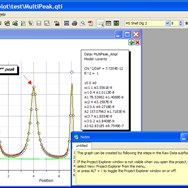
- #Visit vs paraview mac os#
- #Visit vs paraview software#
- #Visit vs paraview windows#
The default values supplied automatically by ICE should be fine for most users. Press the new row button (stylized as a "+" symbol) in the upper-right corner of the resulting dialog box.
#Visit vs paraview mac os#
Mac OS X: in ICE's toolbar, select ICE > Preferences, then Visualization > VisIt in the tree of the "Preferences" page. #Visit vs paraview windows#
Windows or Linux: in ICE's toolbar, select Window > Preferences, then Visualization > VisIt in the tree of the "Preferences" page. VisIt Tools Configuring the VisIt ConnectionĬreating a default VisIt connection will enable ICE to automatically connect to VisIt at launch. All three plugins, and their implementation within ICE, are described below. Similarly, VisIt and ParaView files can be opened by double clicking, but you must first establish a connection to the VisIt or ParaView application.Ĭurrently, ICE features three plugins for visualizing and plotting simulation output data: VisIt Tools, ParaView Tools, and CSV Plotting Tools. csv files, you can simply double click their listing in the "Project Explorer" view to open them. The visualizations for these data files are launched directly from the "Project Explorer" view. The data file should now appear in the "Project Explorer" view, nested under your project (e.g., "Project 1"). If needed, you can also select and import multiple files at once. Once found, select the file, and click Open. This will present a file import dialog where the user can navigate to the desired data file. Next, simply click the Import button in ICE's main toolbar. In this example, we're looking at "Project 1." The latest versions of ICE make adding the data file to your project a very simple affair.įirst, within the "Project Explorer" view, select the project that you would like to associate with the file you are about to import. Your new project should now appear in the "Project Explorer." When you've added your project name and are satisfied with the project path, click Finish. You can also choose where to place the project files if you do not want them in the default ICE location. In the next screen of the wizard, create a project name ("Project 1" in this case). For this tutorial we're going to select General > Project and then click the Next button. This will present the user with the "New Project" wizard. In the resulting context menu, select: New > Project. 
If you have an existing project into which you would like to import data files, you can skip this step.įirst, right click in the white space of the "Project Explorer" view pane. The next step is to create a project in which the visualization data files will reside. In the resulting "Show View" dialog, select: If this view is not yet part of your workflow, use the the main menu bar at the top of the window and navigate to: Within ICE, the user will need to have the "Project Explorer" view open. csv visualization engine is built into ICE with no need for third-party software. VisIt and ParaView applications are called directly from ICE, and the. Currently, ICE supports VisIt, ParaView, and. ICE's "Project Explorer" view allows the user to import data files and launch a visualization session.
#Visit vs paraview software#
The comma-separated value (CSV) plotting tools are built into ICE and require no additional software to be installed. The user will also need to acquire the ParaView server script ( http_pvw_server.py) by contacting the ICE development team.

Using the ParaView tools requires an installation of Kitware's ParaView (version 5.0 or newer). The VisIt website also offers example data files that you can use to familiarize yourself with the VisIt tools. To use the VisIt tools, ICE requires the installation of Lawrence Livermore National Laboratory's VisIt software (version 2.8.2 to 2.9.2) either locally or on a remote machine. 3.3.1.1 Changing the Independent Variable.3.2.1 Configuring the ParaView Connection.






 0 kommentar(er)
0 kommentar(er)
